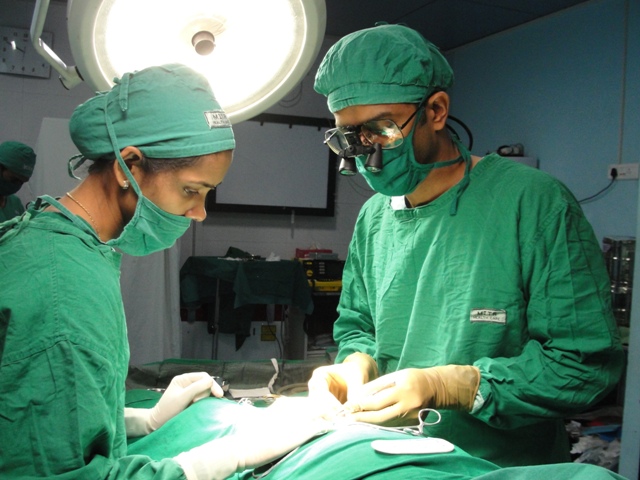One of those questions which parents often ask and which is probably one of the most difficult to answer. But none the less the Question requires its due answer! To start from the basics, Hypospadias is a condition which is generally diagnosed immediately after birth by the pediatrician / neonatologist. The anomaly is very evident by an incomplete prepuce (foreskin), bare glans (head of penis), often a bent penis (called chordee) and misplaced urinary opening. Mostly it is an isolated anomaly but sometimes there may be an associated undescended testis with hypospadias. Since hypospadias is diagnosed at birth, ideally the child should be referred for a surgical opinion from a pediatric urologist or a surgeon trained in doing hypospadias surgery in the first few months of life. Early referral helps as the parents can then plan their lives around treatment of hypospadias. Hypospadias is a problem that always requires surgery called urethroplasty except in very minor varieties such as glanular hypospadias without chordee. It has been shown in multiple clinical studies that children do better when they are operated for hypospadias in infancy itself, ideally around 6-12 months of age. The reasons for these recommendations are multiple:
1. At this young age the tissues are very soft and tend to heal very well after surgery.
2. Emotional and psychological issues around getting operated in genital area are non- existent at this age.
3. Once the surgical result has been good – children at a later age don’t even notice or come to know that they ever had hypospadias as there is hardly anything to differentiate these children from other children. For most of the distal and moderate hypospadias, penis after surgery just looks like a circumcised penis. There is also a debate whether these children should actually be told that they had hypospadias earlier on in their life.
4. Incidence of wound infection, post surgery bleeding etc are much less at younger age as bacterial colonization is much less.
5. Post- operative pain and erections are less common at this age.
6. Management of a small child in diapers and urinary catheter is much easier in infancy. Typically we use a double diaper care where the catheter is brought out through a small hole in the inside diaper to drain into the outer diaper. The inner diaper remains dry and thus prevents rashes and outer diaper is changed whenever it gets wet with urine. In an older child, diapers are very difficult and bulky to use.
Considering all this, the general consensus of American Academy of Pediatrics is to recommend surgery between the ages of 6 months to one year. At hypospadias foundation and MITR Hospital, we have been operating children around the age of 6-9 months for the last few years with excellent surgical results and happy parents. Once the surgery and the post operative recovery period is over, parents often come and tell us that it was a good decision that they got their kid operated at this early age and now all their worries are over. Some of the parents still worry about getting their kids operated in infancy and come at a later age for surgery. We and the staff can then see the difference in the recovery and post operative issues when compared to younger kids undergoing hypospadias repair. Another way to look at this is that a child with hypospadias will always need surgery, this is a condition which will never get better on its own. The longer we wait, more the parents will think about it and feel anxious. So earlier dealt with, the better it is for everyone. It is definitely better for the kid but it is in a way better for the family and parents as well. And surely it is better for the doctor as his job is to give the best results and post operative comfort.
Contact Form for Hypospadias Foundation
Please fill all clinical details and upload pictures and clinical summaries (if available)

